
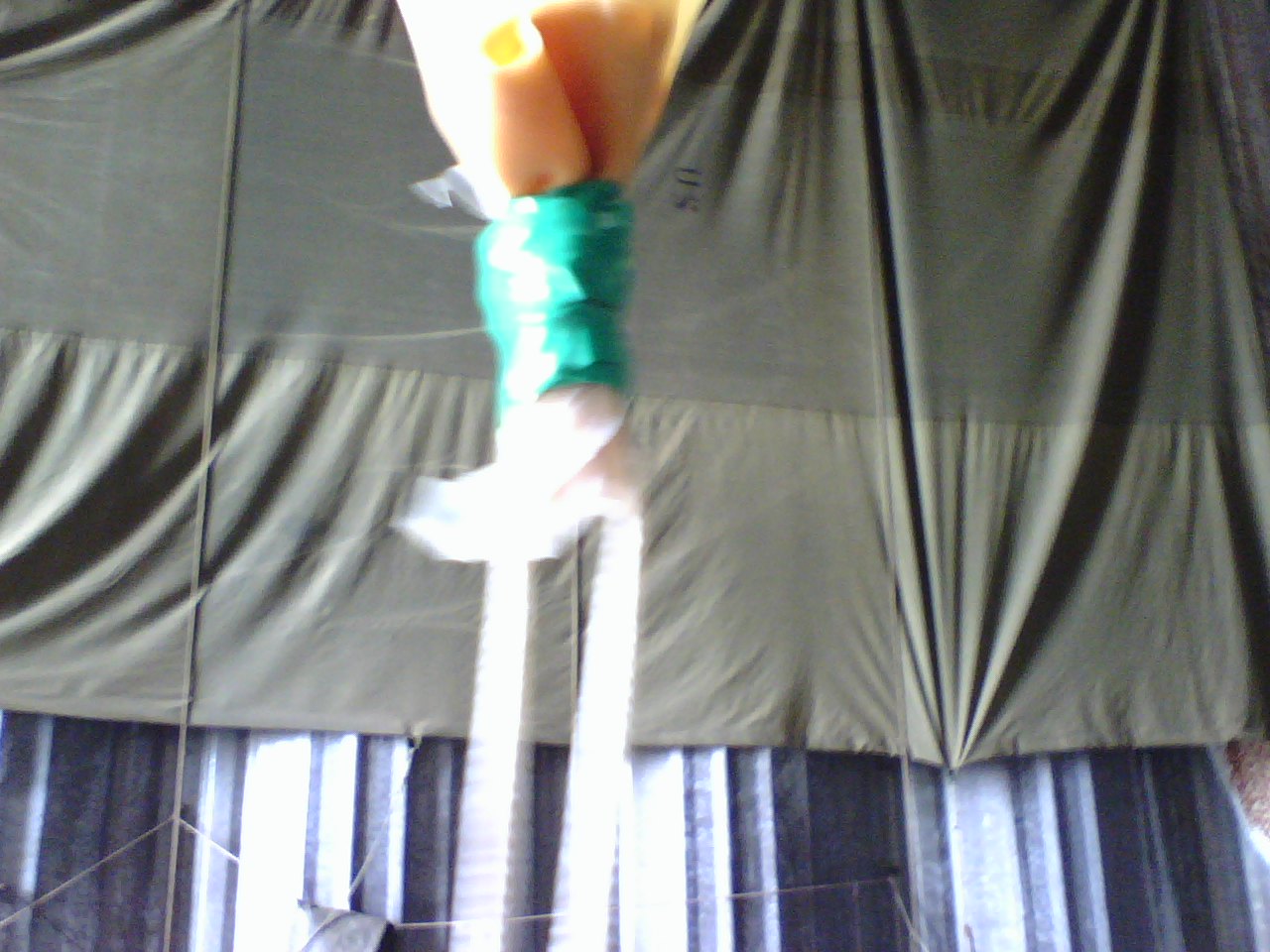
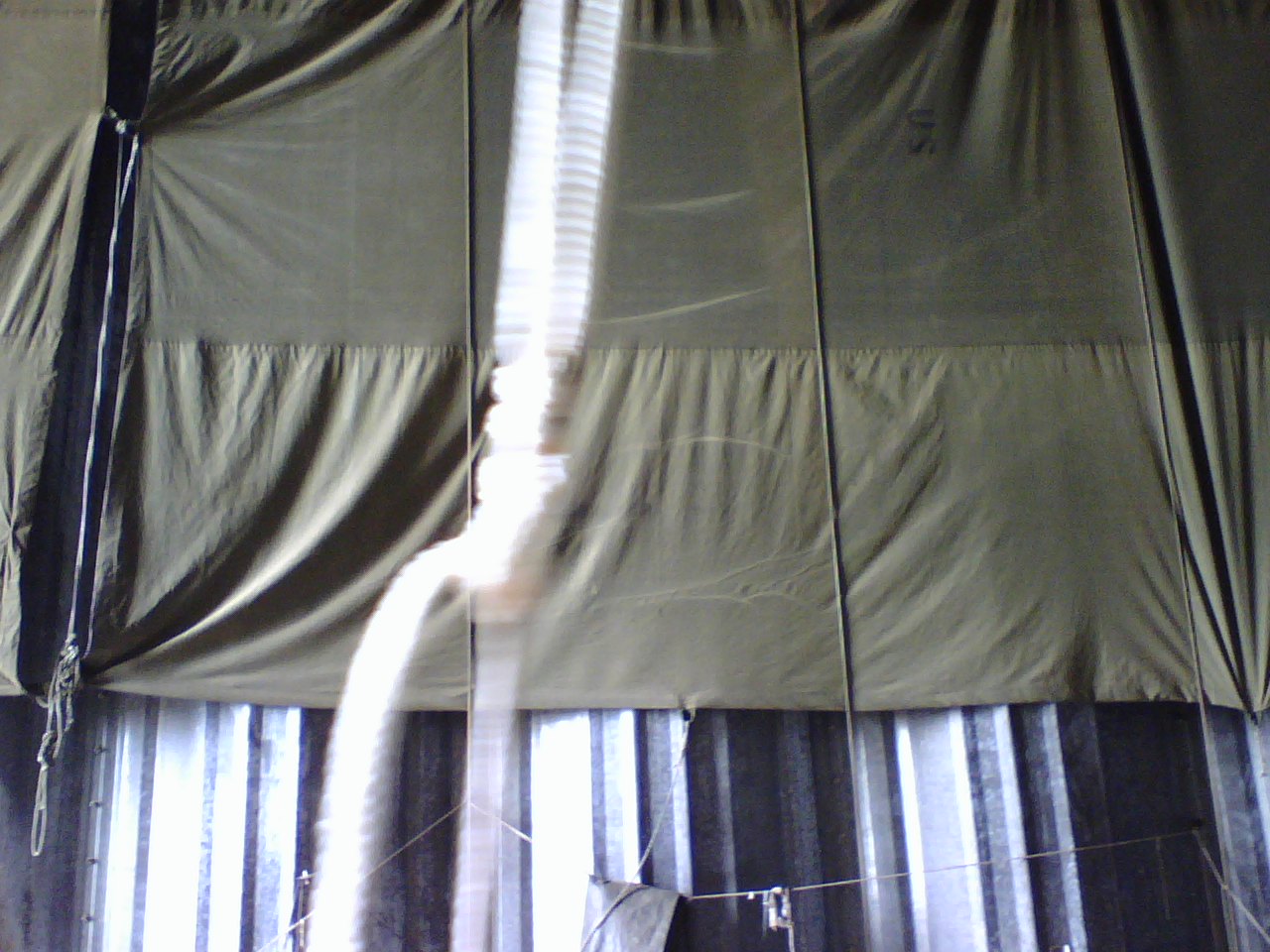
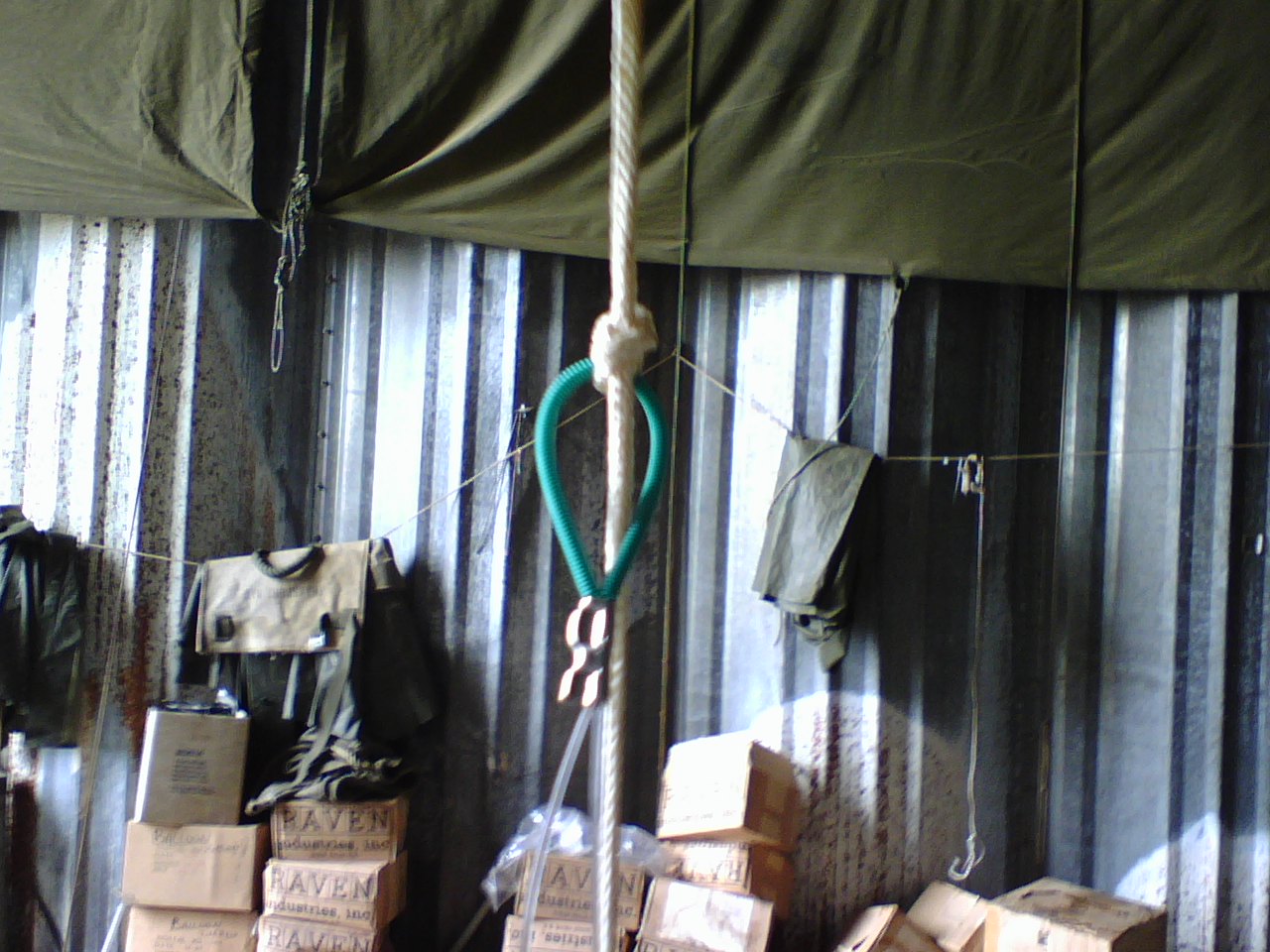
The fishing line then stretches 6.39 meters to the parachute and cut down package.
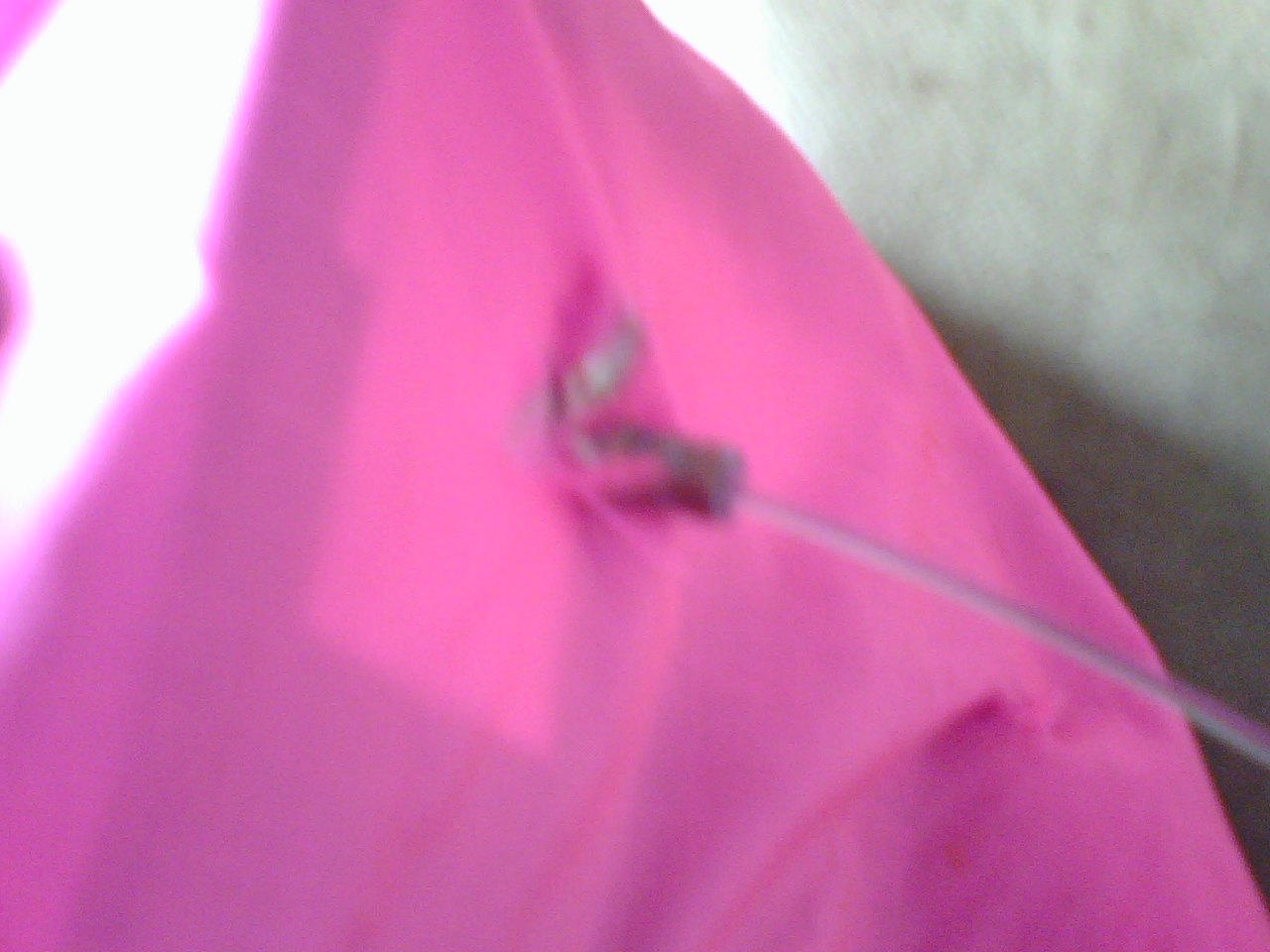
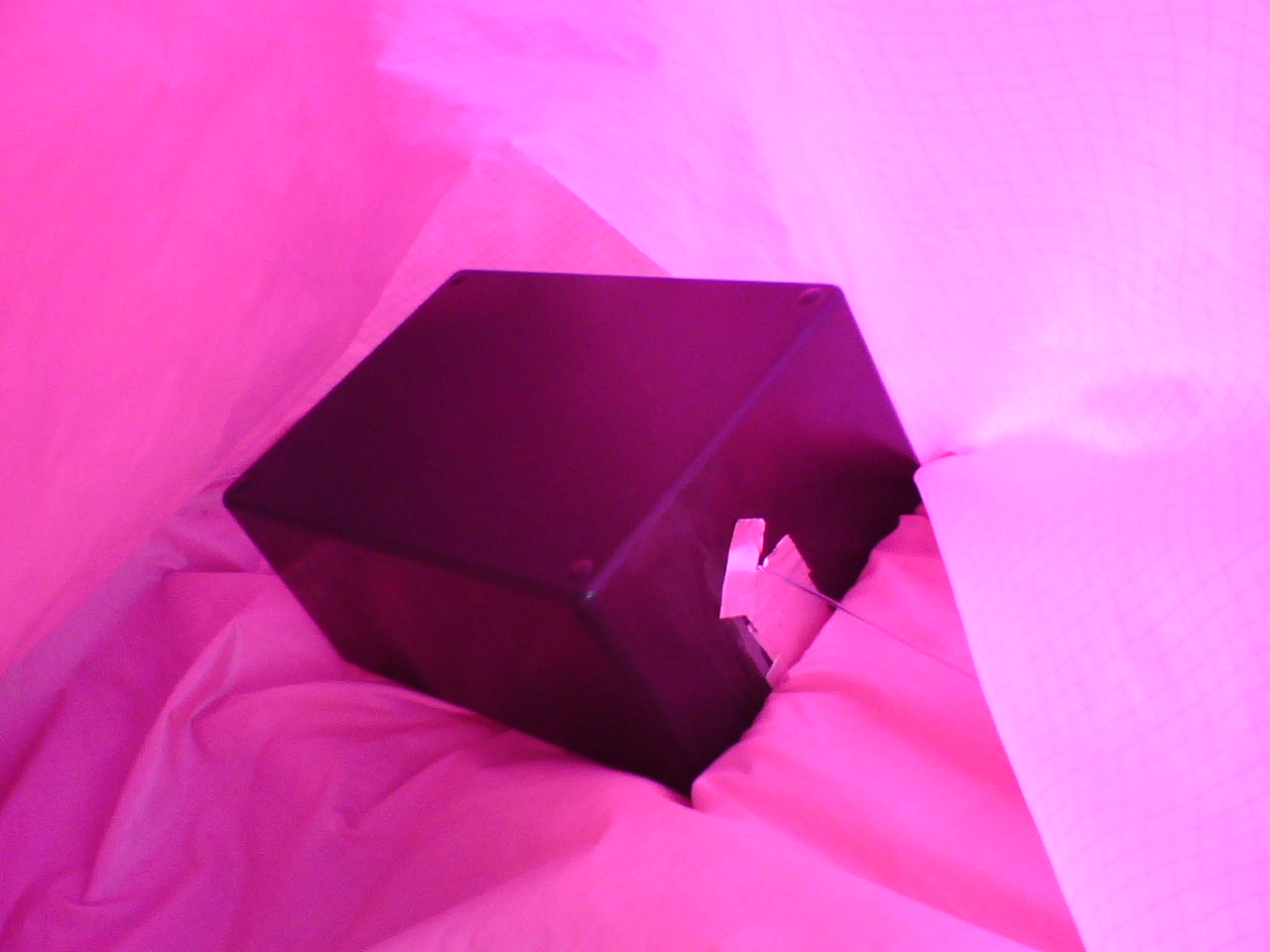

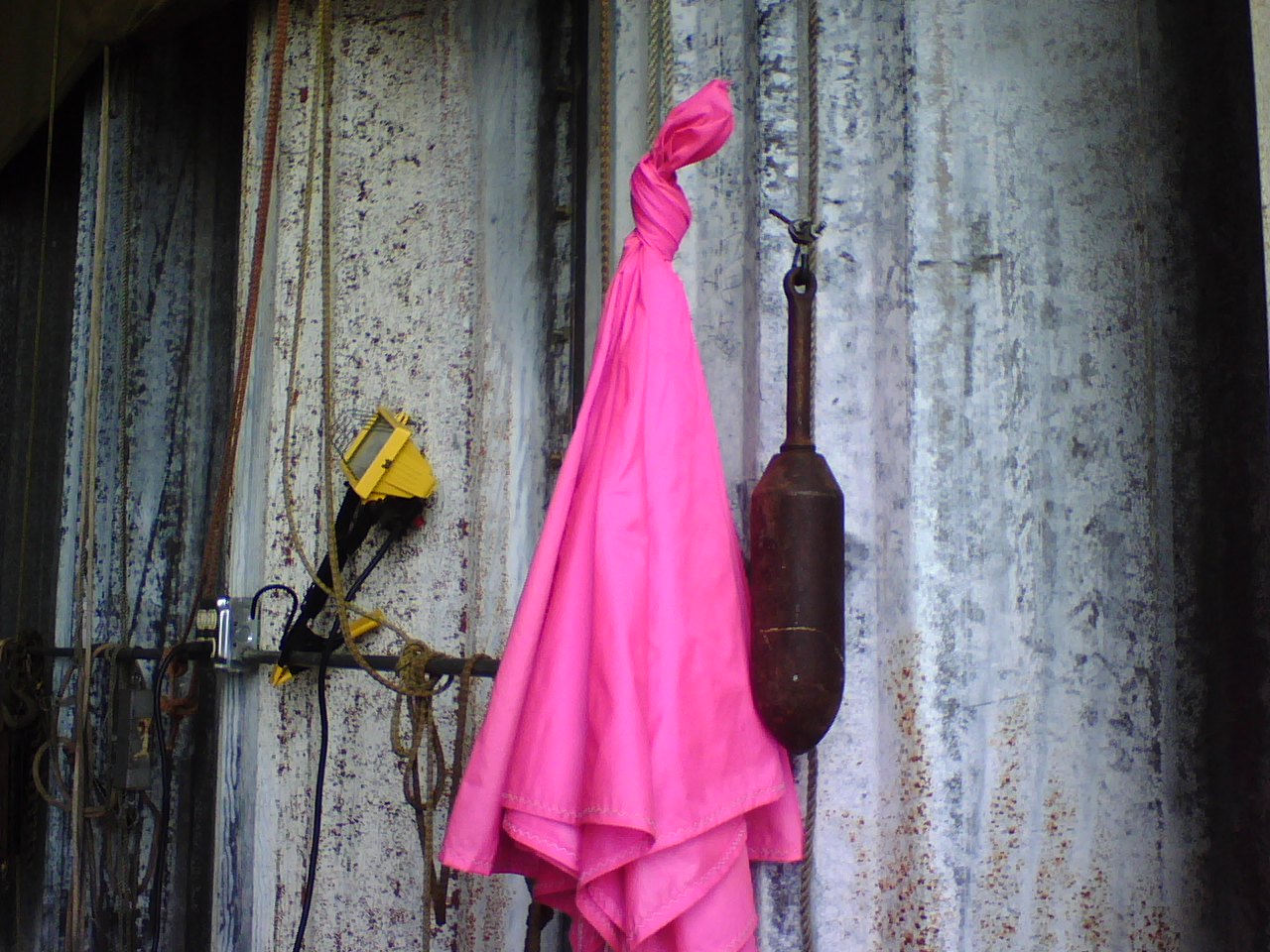
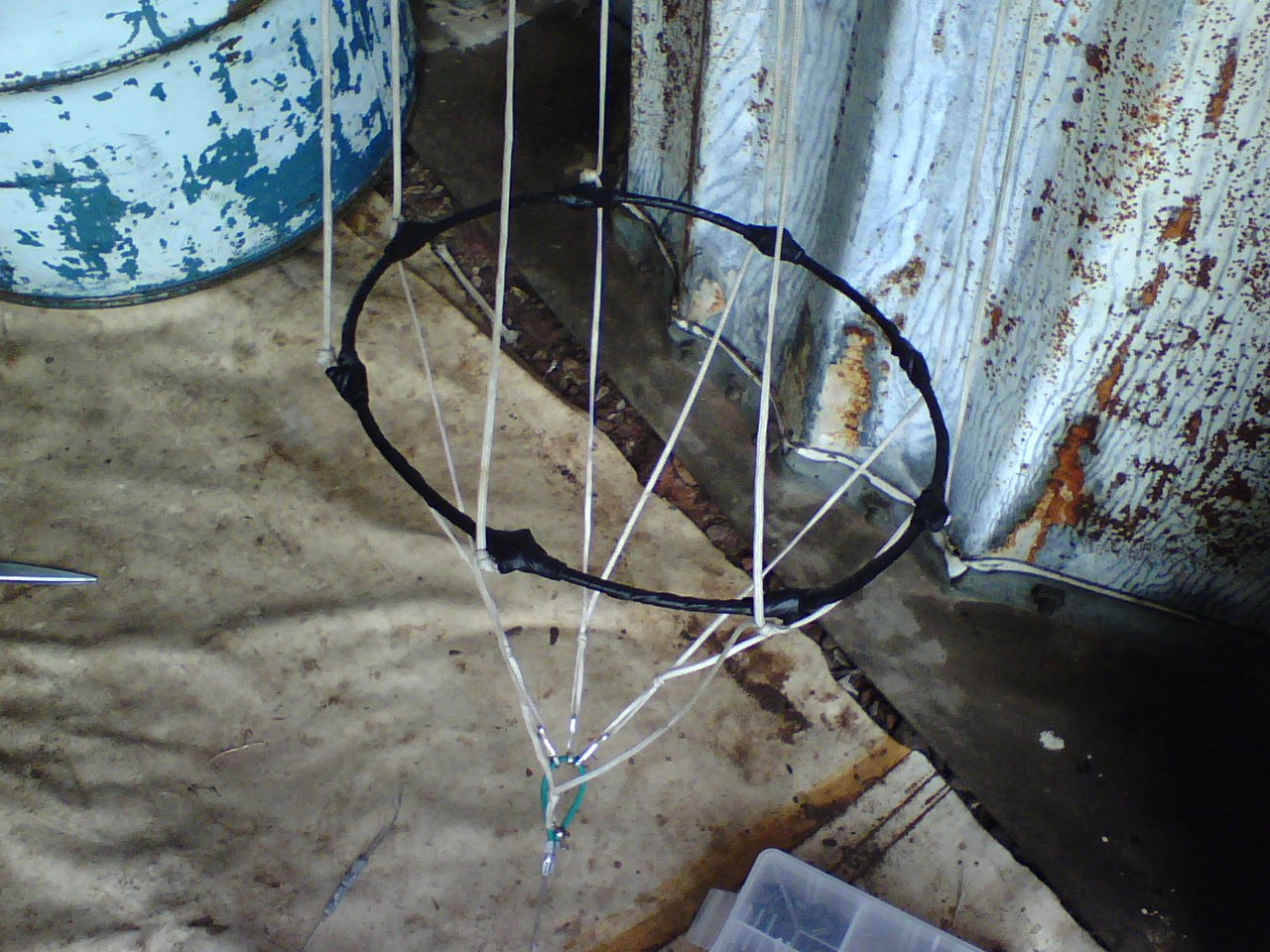
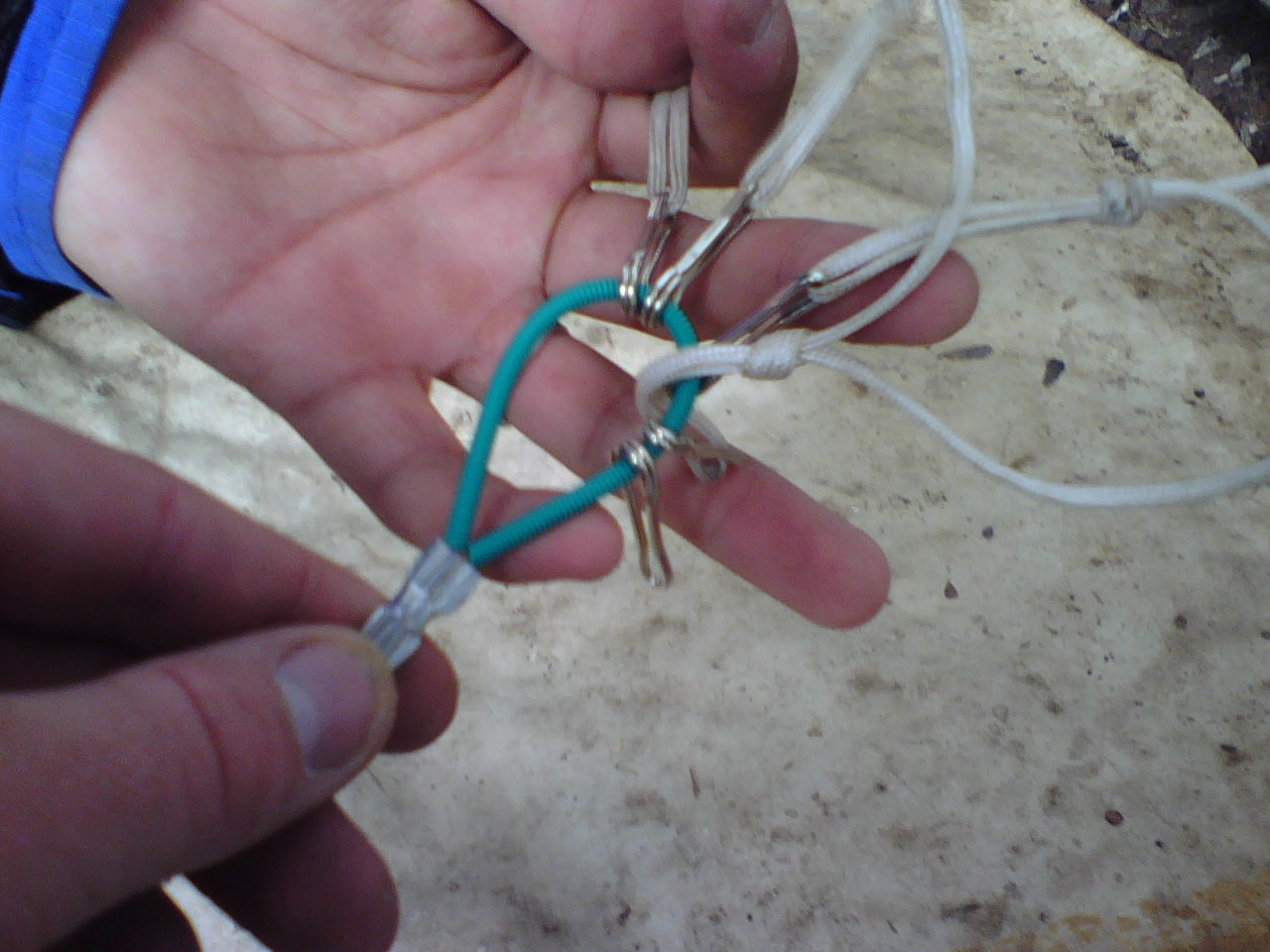
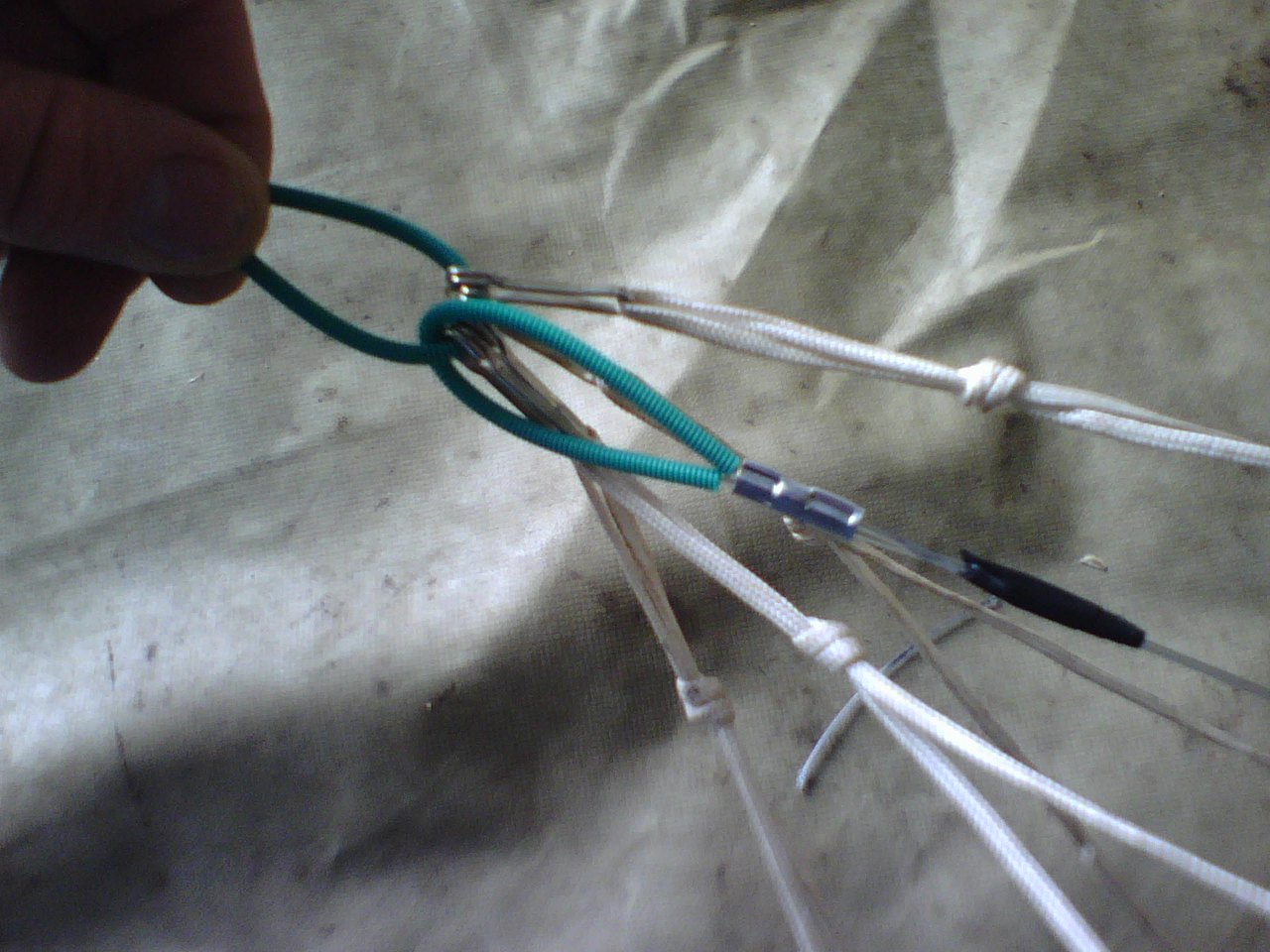
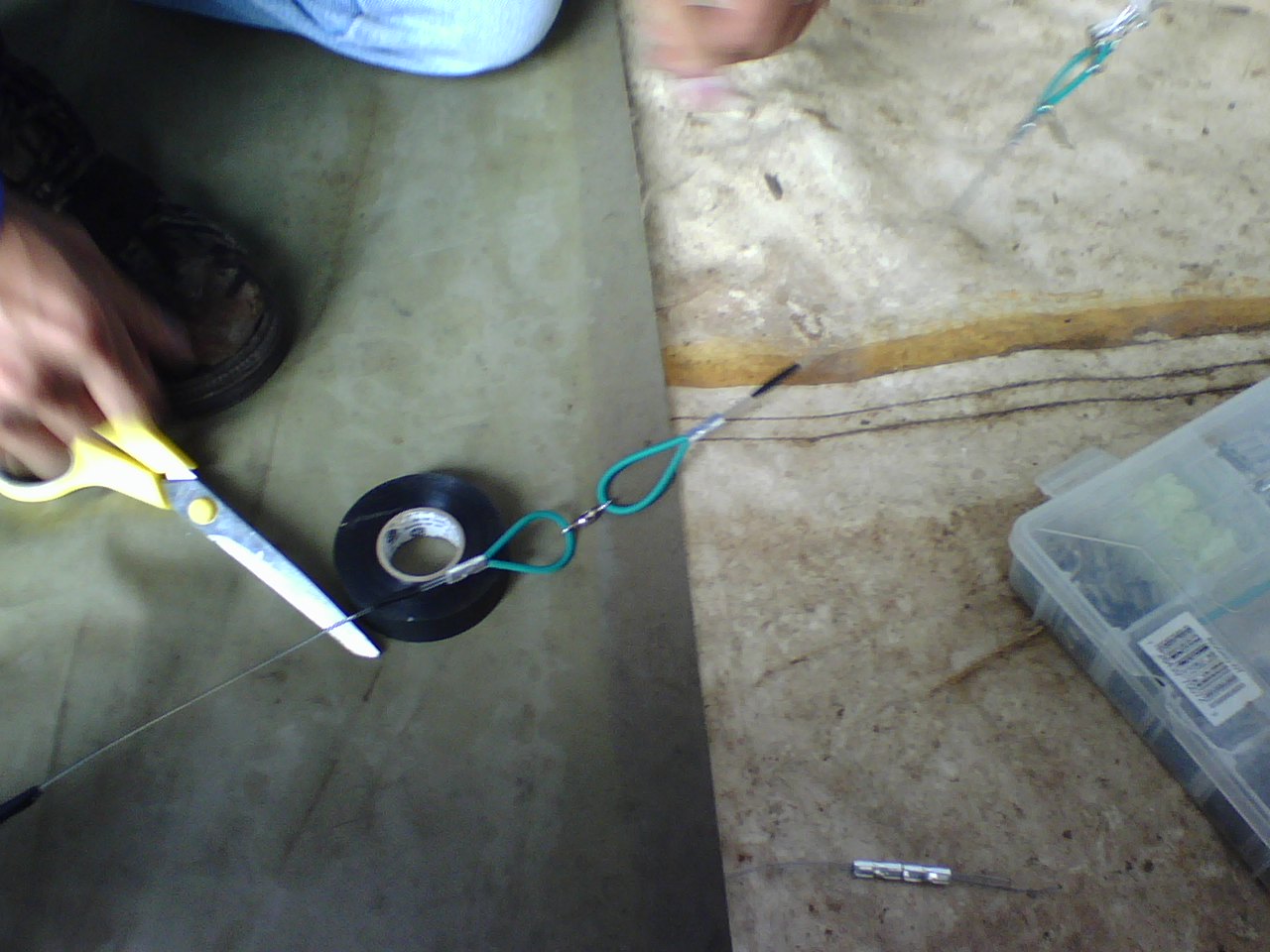
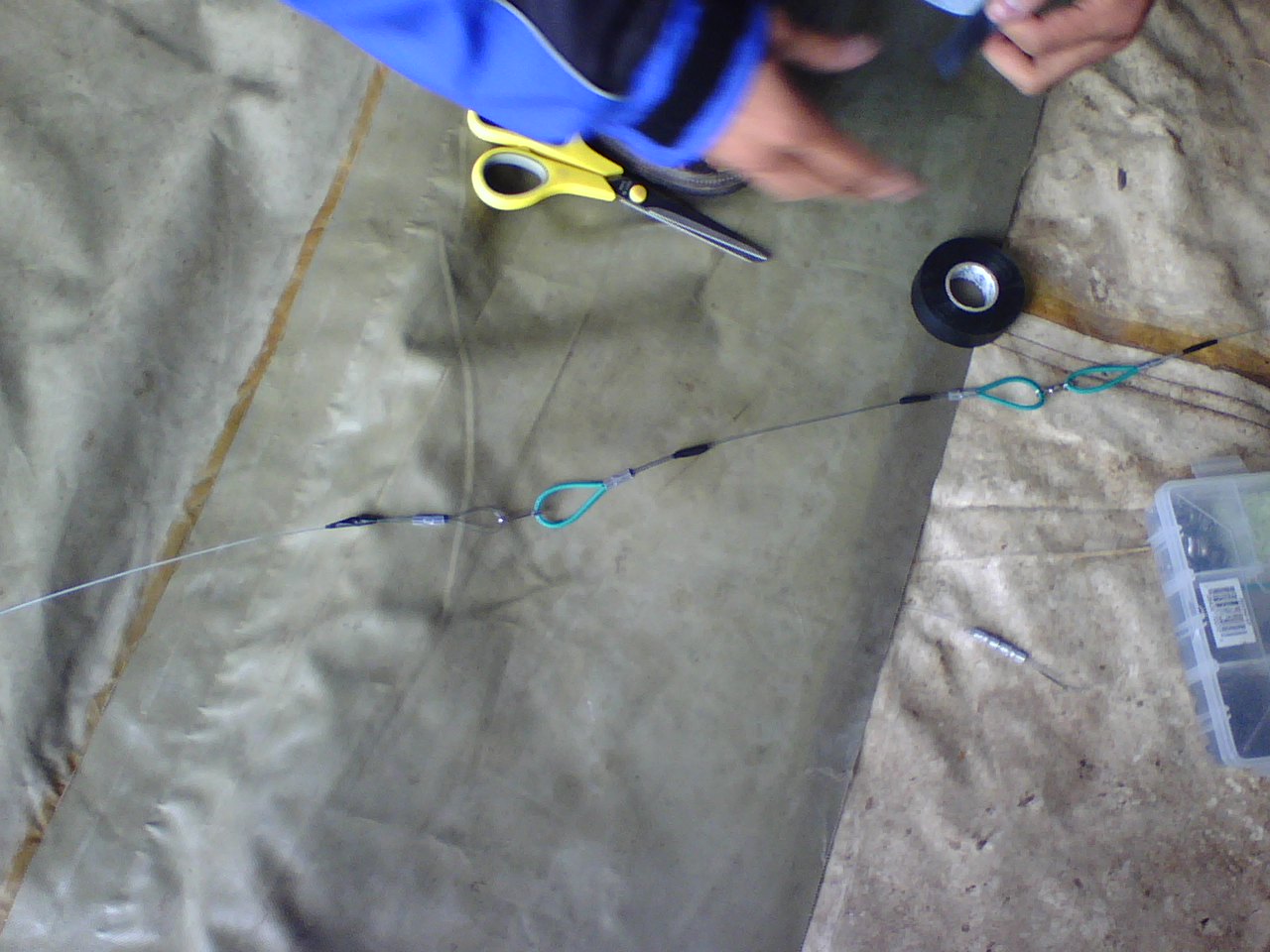
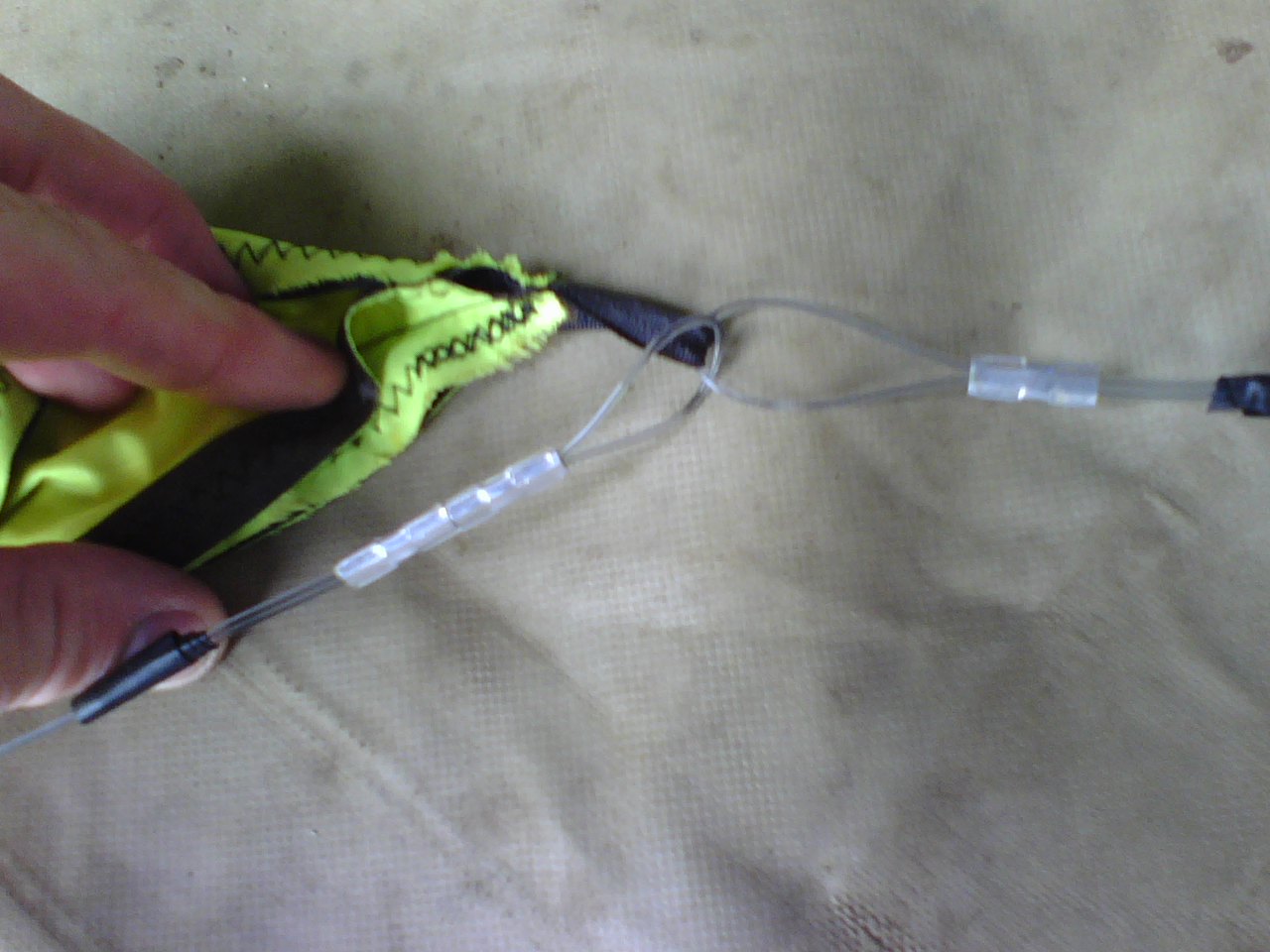
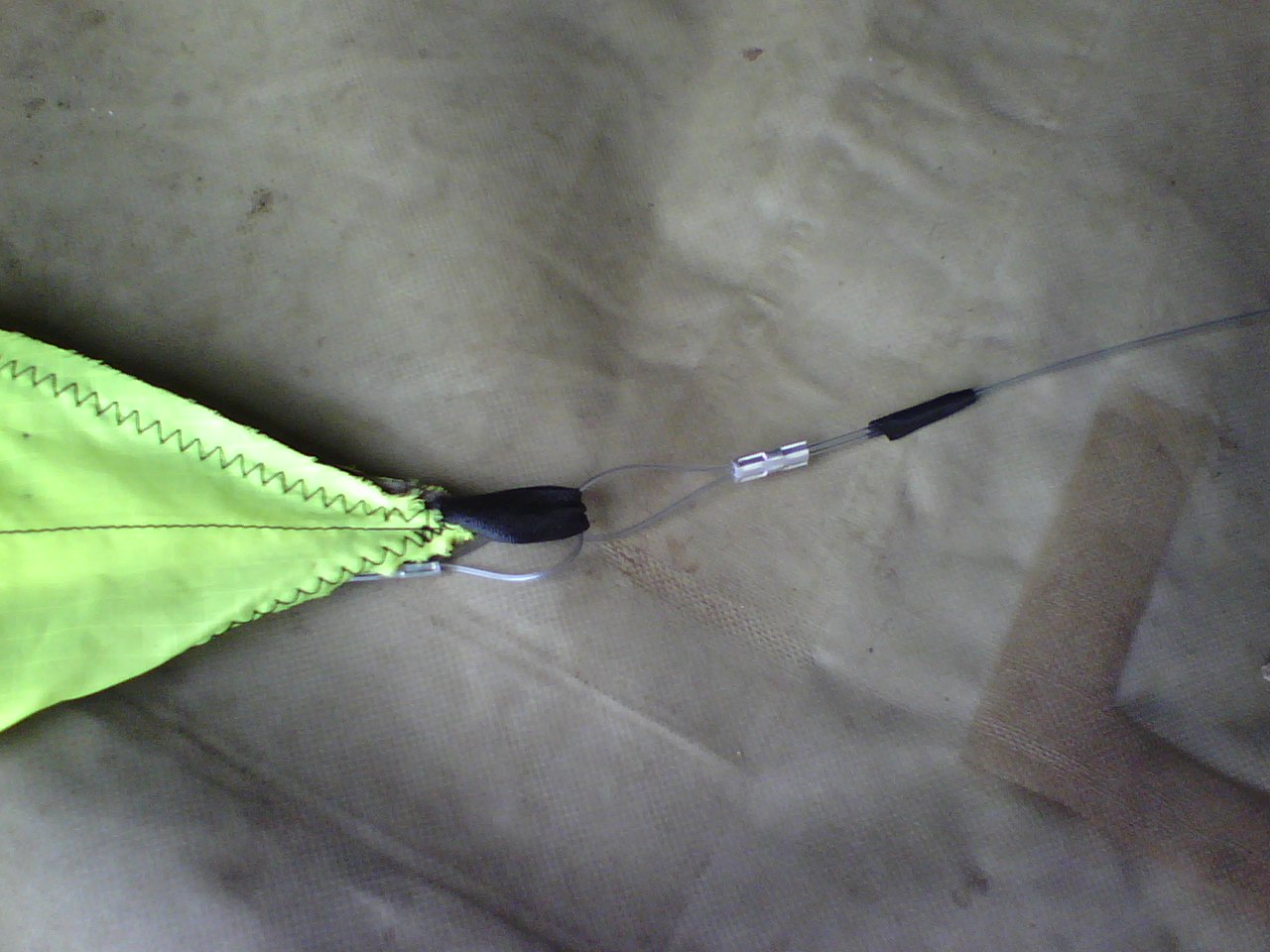
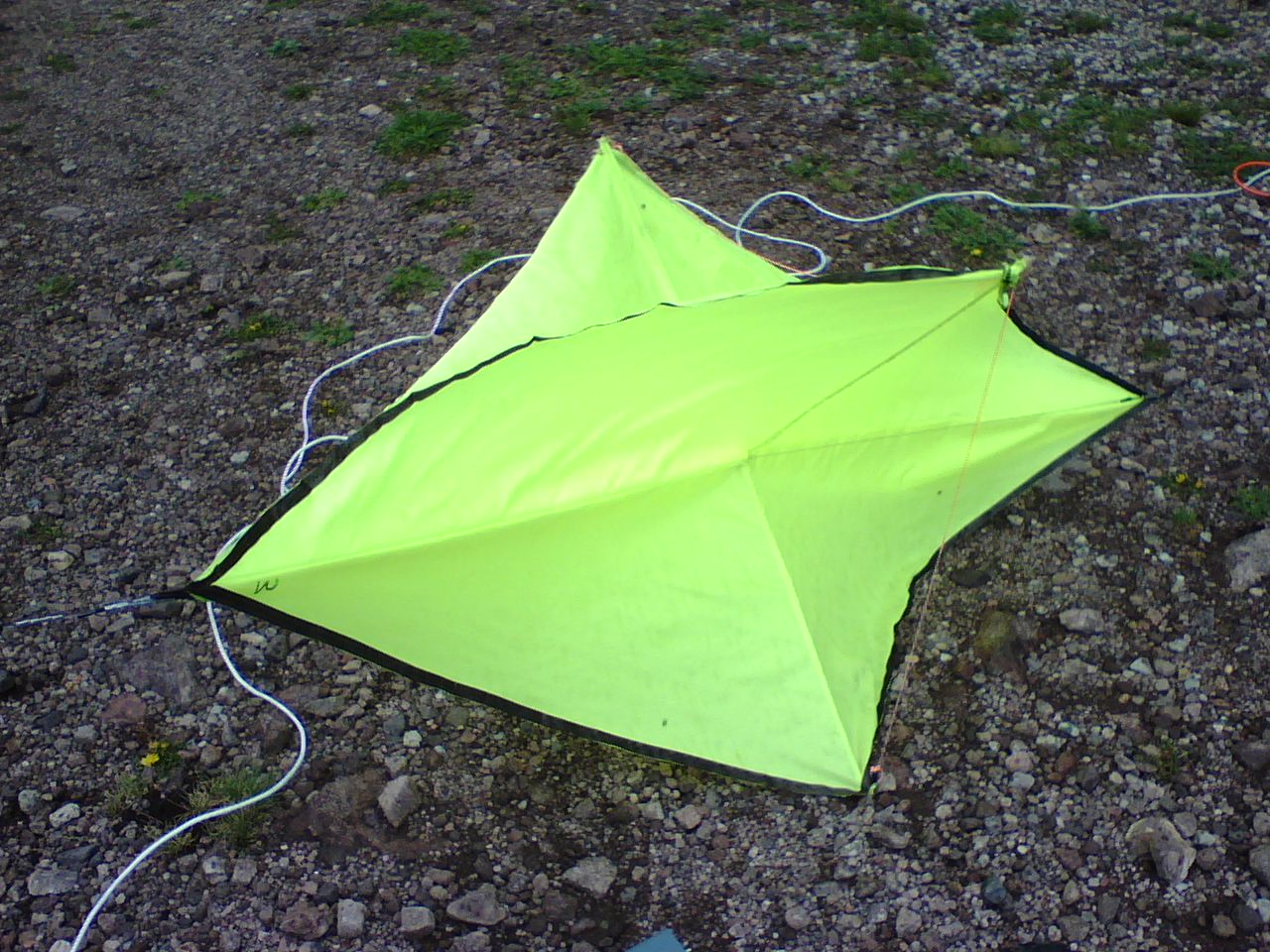
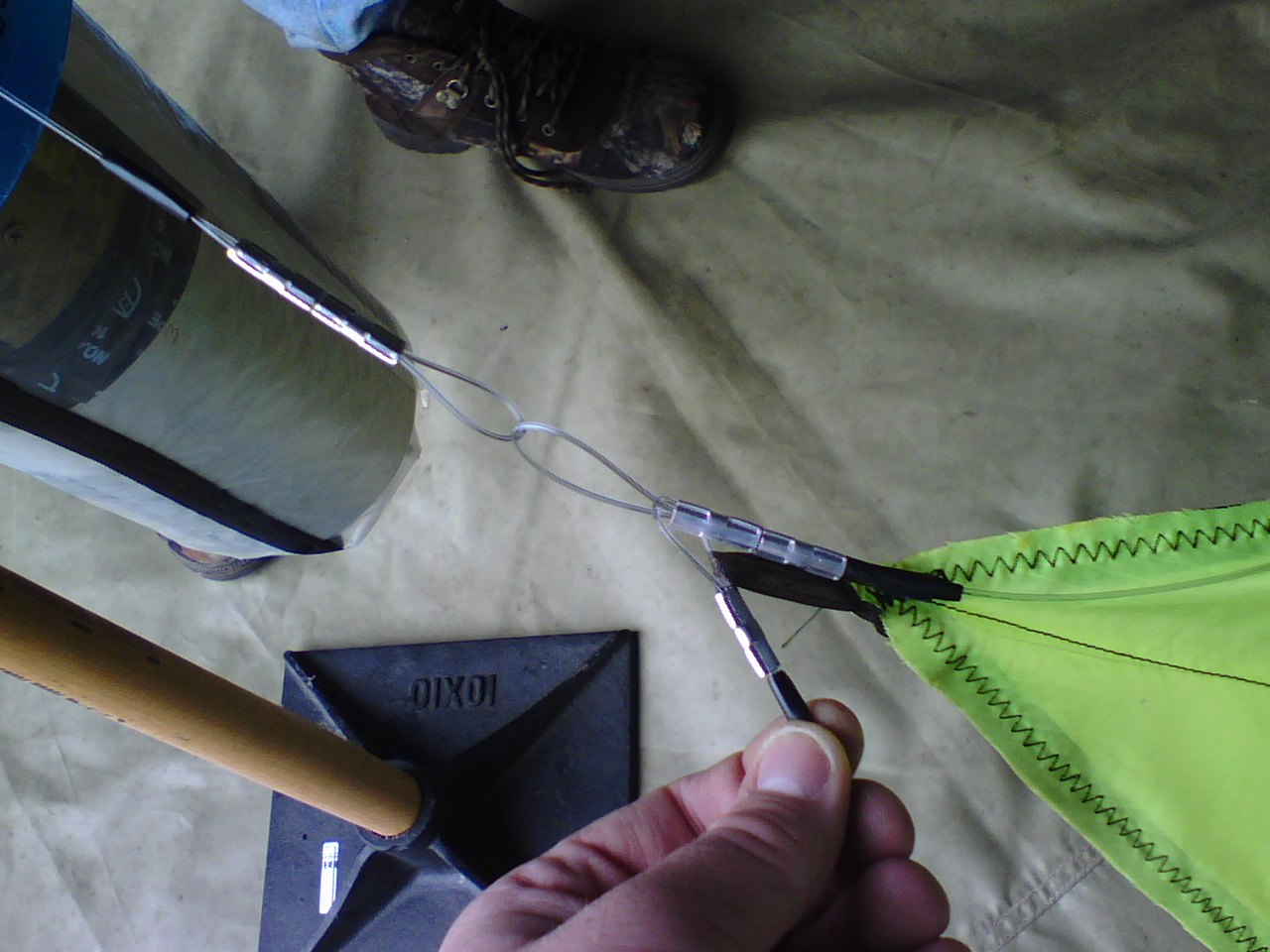
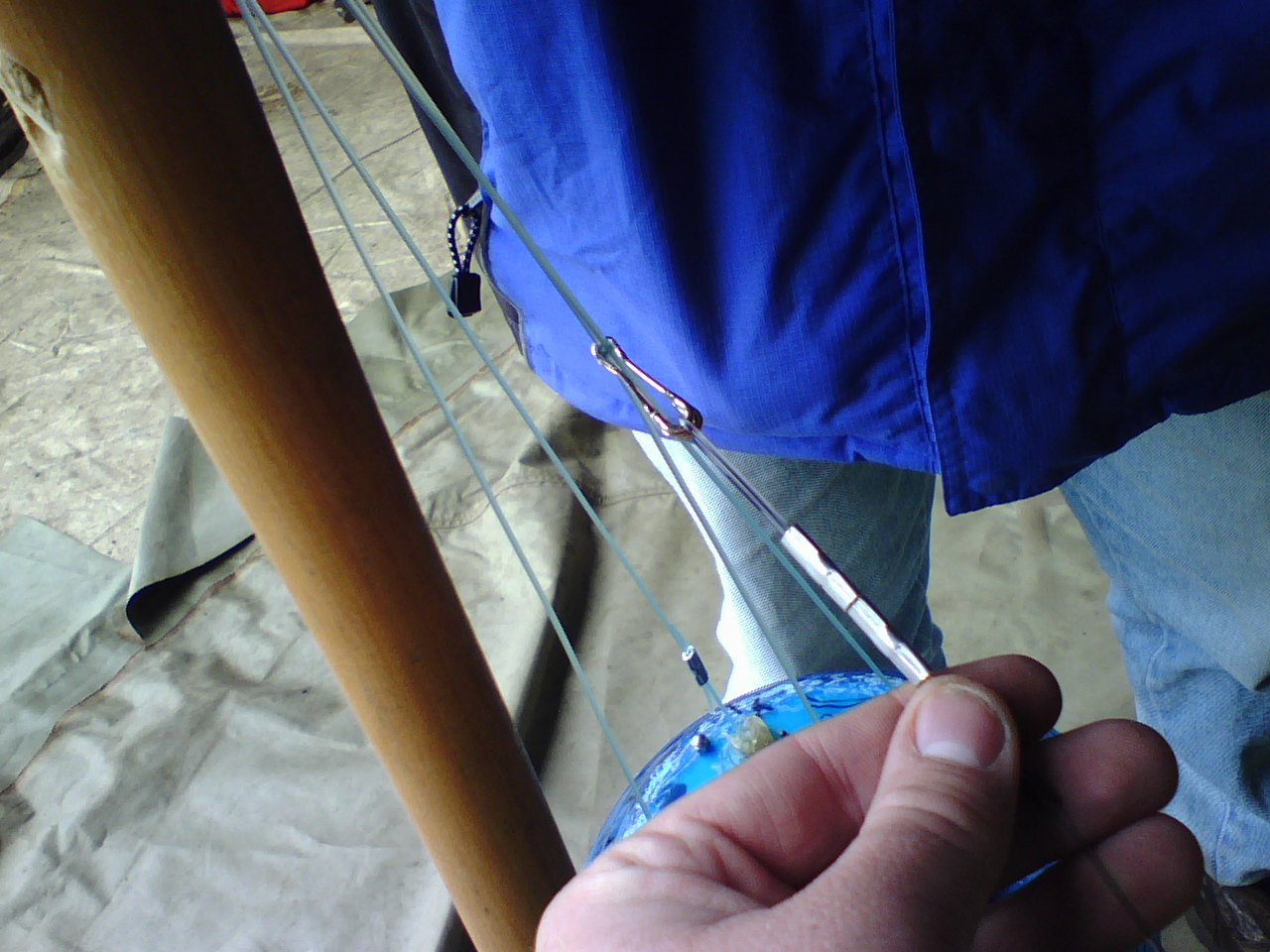
The line from the Esonde to the damper was 27 cm in length, attached with two clamps at both ends.
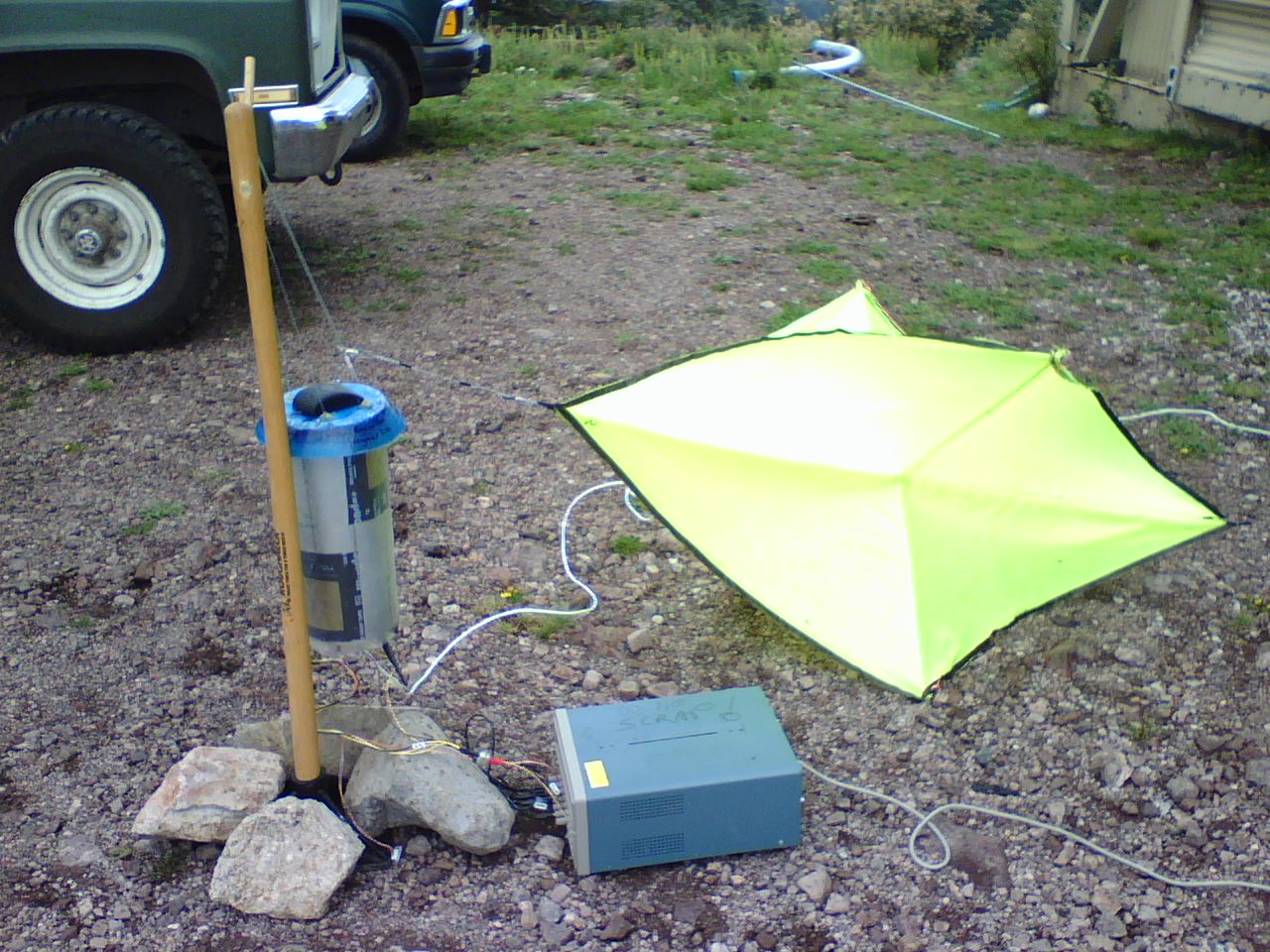
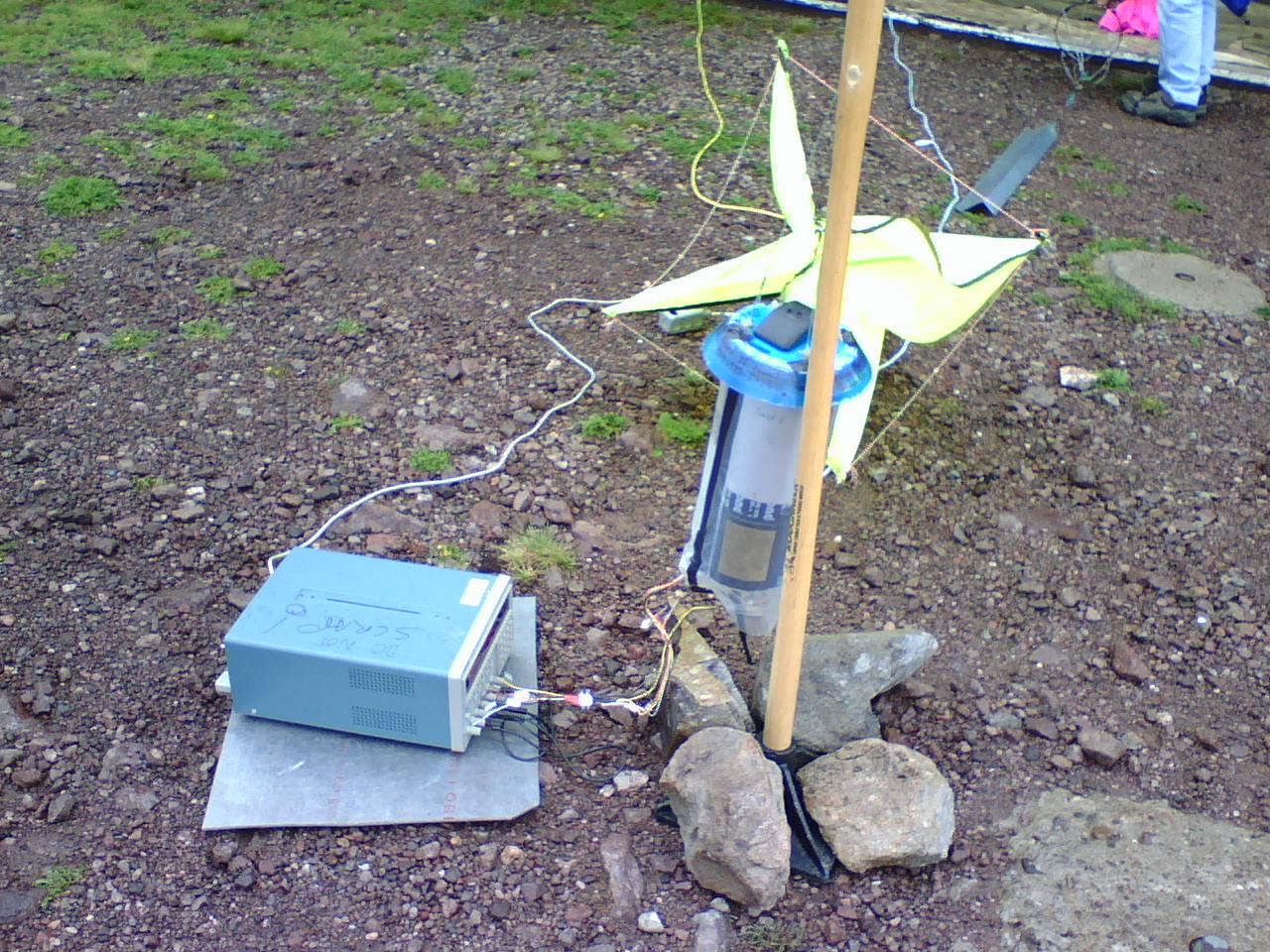
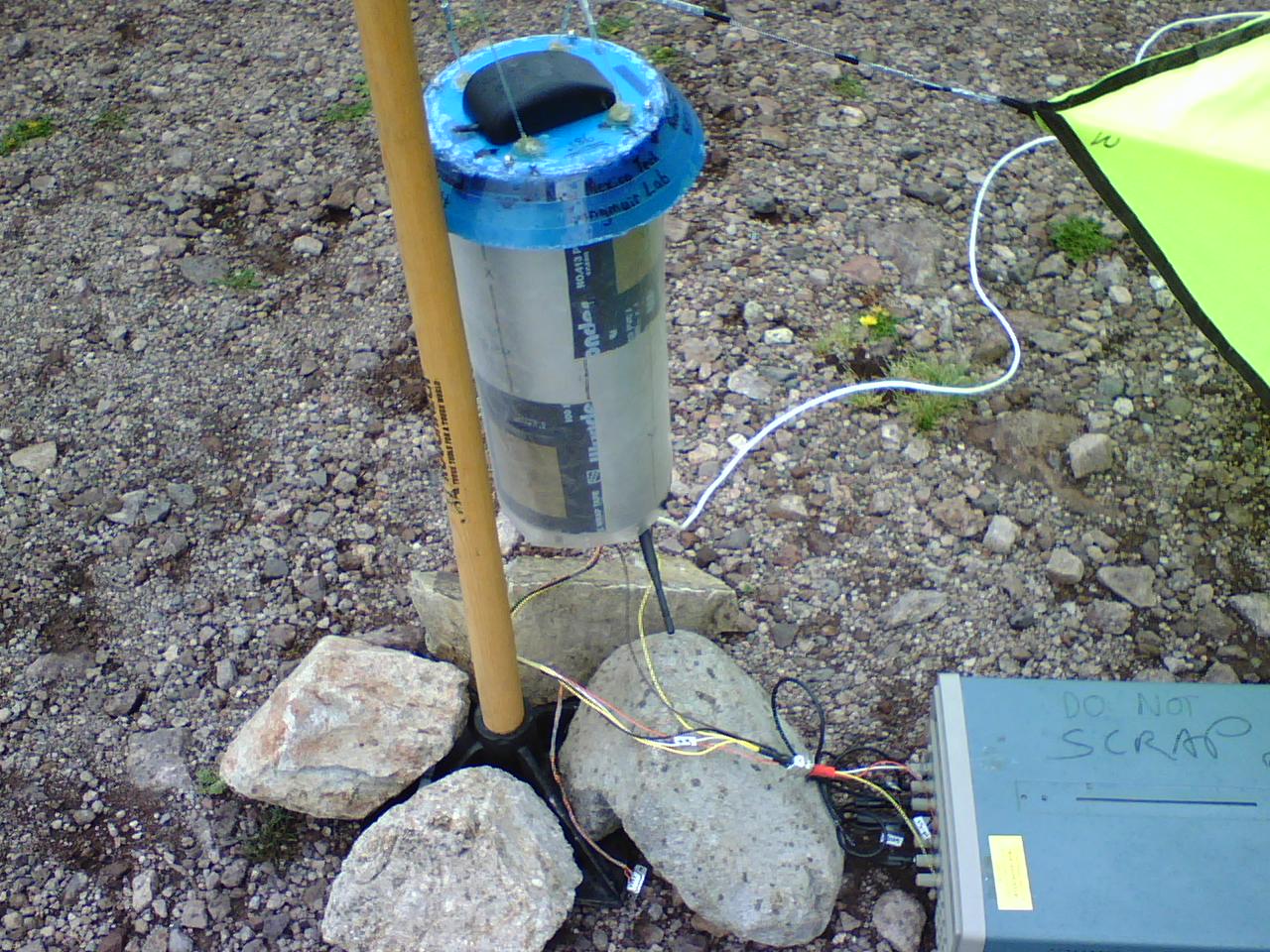
The Esonde itself had a mass of 1.992 kg.
| Train Device | Pictures | Description |
| Balloon |     |
The factory marked 600
gram
latex balloon is from Scientific Sales, Inc.
(https://secure.scientificsales.com). Its last actual
measured
mass was 608 grams. Its connection to the train is first by
rope
and then to fishing line. The attachement to the rope is a
bowline knot on the balloon end (with some extra overhand knots for
remaining length of limp rope) and a series of overhand knots that hold
a loop of fishing line with plastic spring covering it in place.
Below that the line is connected to a sandbag (which will be
cut
right before launch). The was rope connected to the
balloon
by first folding the filling end of the balloon in half longways
(perpendicular to the ground), then sealed with two cable ties, then
wrapped with plastic, another cable tie towards the top of the plastic,
folded in half the other way around the loop of rope, then held by two
more cable ties, and finally wrapped around many times with tape.
The rope was 92.5 cm in length. The fishing line then stretches 6.39 meters to the parachute and cut down package. |
| Cut down package |   |
The cut down package had a mass of 468 grams with dimensions of 18cm x 12.5 cm x 8 cm. The cut down package was nestled inside the parachute with the line running through it and then down 1.63 m to where the ropes from the detangler ring attach to the main line. |
| Parachute |   |
The parachute and the detangler ring together had a mass of 294 grams. The ropes from the parachute went down about 1 meter to the detangler new ring made by Gao Peng Lu and then another 30 cm to where they attach to the main line. Loops were tied in the ropes to attach to the detangler ring about 29 cm from their attachment to the main line below (two loops per rope because there are four ropes each attached to the parachute at both ends. |
| De-Tangler Ring |    |
The detangler ring and the parachute together had a mass of 294 grams. The detangler ring itself was a piece of copper wire wrapped in black duct tape. Eight evenly spaced pices of more duct tape were put around the ring to make points of greater width. Here, the loops in the parachute cord were cable tied to the ring, the extra cable tie length snipped off, and copious amounts of duct tape wrapped around the cable ties to keep them in place. From there the ropes led down to be connected to the main line with the use of clamps. |
| Line |   |
From the parachute cords' connection, three pieces of connected fishing line (with lengths or 30 cm, 36 cm, and 1.95 m in order from highest to lowest) were connected down to the damper. The connector from the first piece of this line to the second allows the line to twist freely like a swivel. |
| Damper |      |
The line above connects to
the damper and more fishing line stretching down. The damper
is
1.26 m in length and the line is just slightly shorter. This
is
important to keep the tension on the line and not the damper.
The
line traveled down the side of the damper to its middle, was strung
through a hole in the middle of the damper, and went down to the end.
Another percausion was made to make sure the tension was not
on
the damper: the line coming up from the Esonde was connected to line
going down the middle of the damper, but the bottom of the damper was
connected to the line going down its side seperately by a little loop
of fishing line. A test of putting tension above and below
the
damper showed this method to be effective in keeping the tension off
the damper. The line from the Esonde to the damper was 27 cm in length, attached with two clamps at both ends. |
| E-Sonde 6 |    |
The line to the Esonde was
attached to two squeeze clamps that connected directly to the fishing
line coming off of the Esonde. The length from the line
connection to the Esonde was about 40 cm. The Esonde itself had a mass of 1.992 kg. |